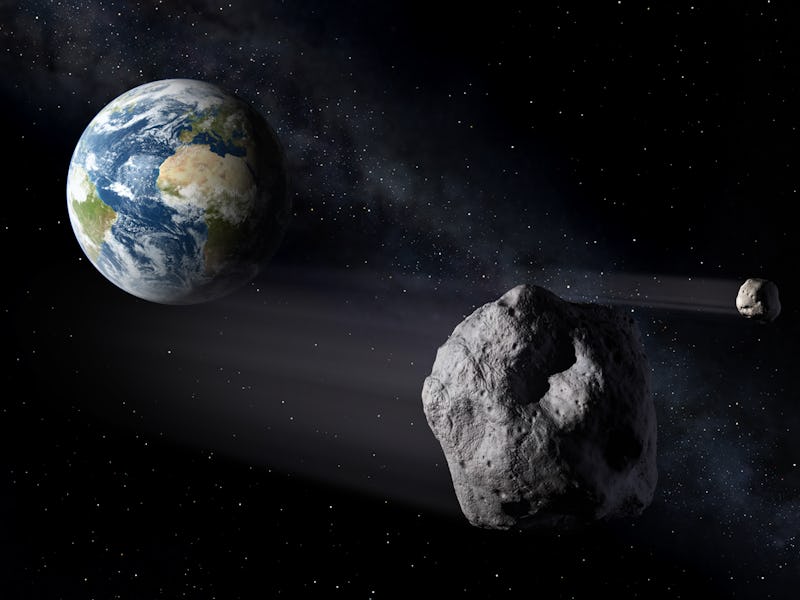To those hoping that the cold, unfeeling vacuum of space would end humanity’s reign of terror on Earth: I am sorry. New research from a planetary scientist suggests there are less potentially deadly Near Earth Asteroids (NEAs) than previously assumed, which is seriously bummer news for the existentially exhausted.
NASA and other agencies have been keenly monitoring Near Earth Asteroids for years, and estimating how many undiscovered ones might pose a threat to us. Planetary scientist Alan W. Harris of MoreData! in La Canada is one such scientist who has been researching these objects — however, he recently found that due to a rounding error in his data, there might be significantly less hazardous asteroids around Earth than he thought. Harris presented his findings at the 49th annual meeting of the American Astronomical Society’s Division for Planetary Sciences in Provo, Utah last week.
Scientists like Harris usually ascertain information about NEAs by observing an asteroid’s albedo, or how much light reflects off it. This is measured in absolute magnitude (H) — the lower the number, the brighter the object. Naturally, measuring NEAs like this leaves some room for error, because the size of an asteroid isn’t always correlated with how bright it is. Even the best telescopes might not be able to detect a NEA’s size with extreme precision.
Furthermore, information in the IAU Minor Planet Center was rounded off in such a way that it threw off what could be the true number of undiscovered NEAs out there. Back in 2015, Harris and Italian astronomer Germano D’Abramo estimated about 990 large (greater than 1 km) NEAs brighter than H = 17.75. But after adjusting their numbers after this IAU rounding issue, their estimate has dropped to 921 ± 20, according to a press release. This would essentially mean there’s about 30 to 40 potentially dangerous NEAs left to be found — previous estimates had assumed around 106 were still lurking.
“It’s interesting that there’s still much to learn about asteroids (composition, structure, surface and core, etc) that refining our instruments for detection alone is an improvement,” Caitlin Ahrens, an astronomer at the University of Arkansas, tells Inverse. “Albedo has been improved, so knowing that helps with a starting point in knowing the composition [of the NEA] at least.”
For those who haven’t completely given up on hope for humanity, this is good news. It doesn’t seem like Earth is in any immediate danger of getting struck by a gigantic space rock any time soon. For the nihilists, cynics, and anyone who’s ever been on Twitter for more than five minutes, again, my apologies.
